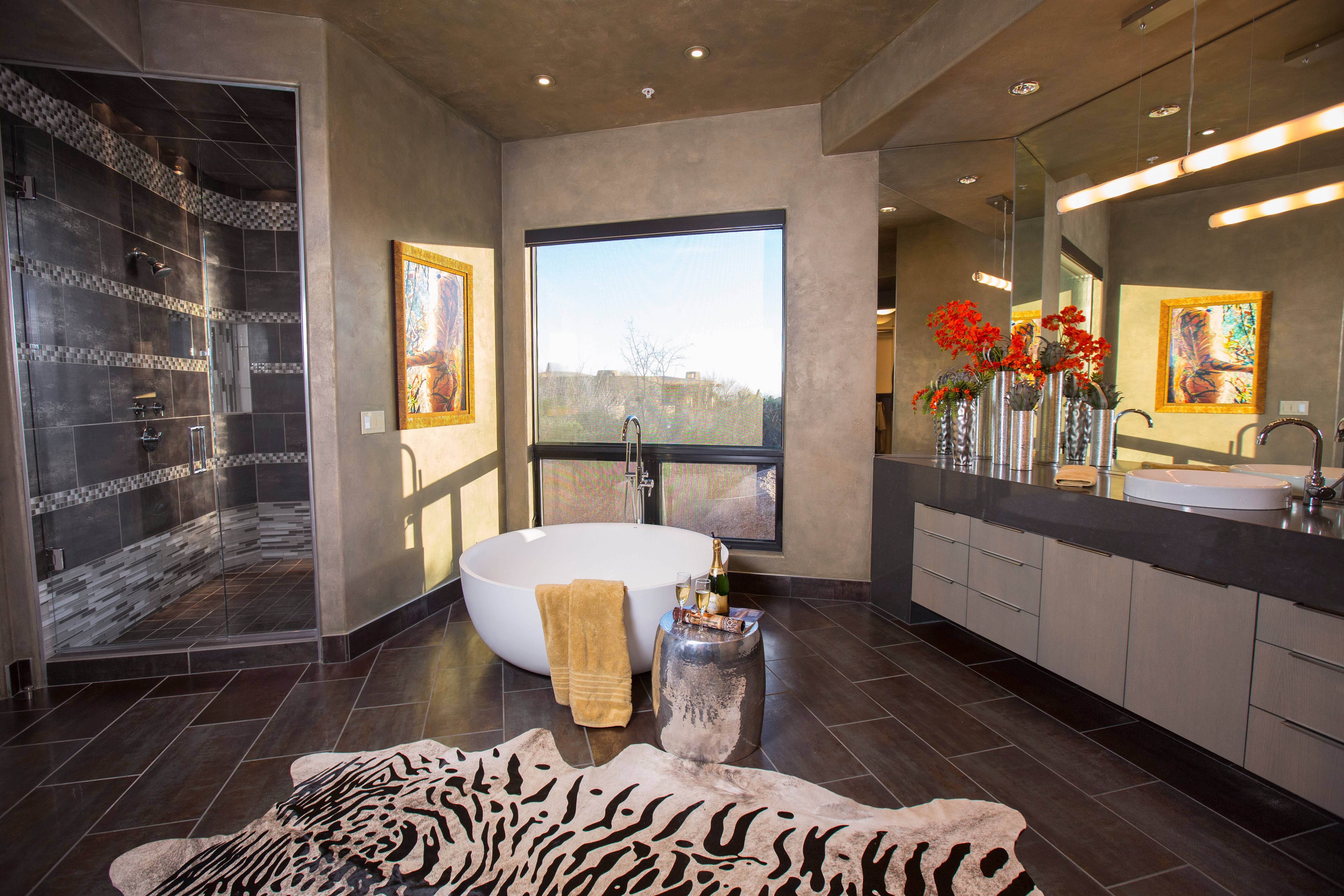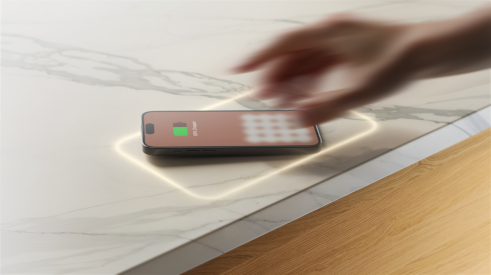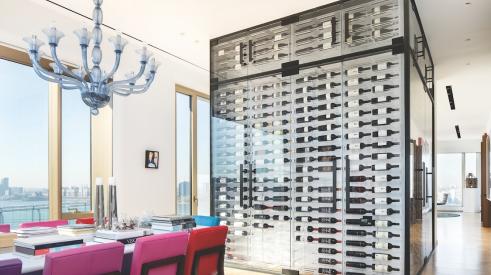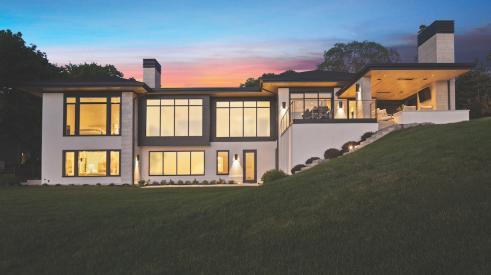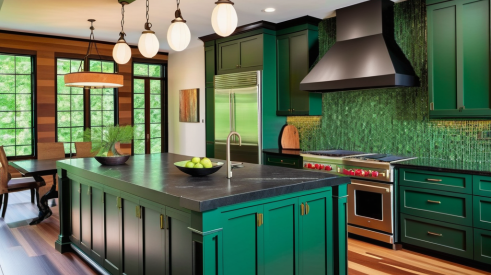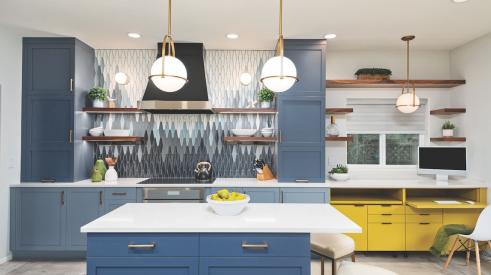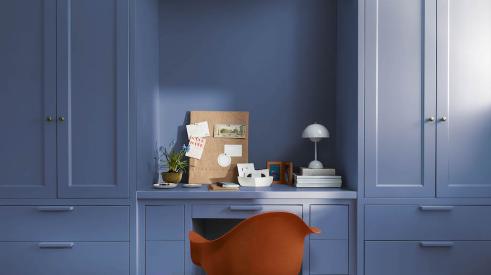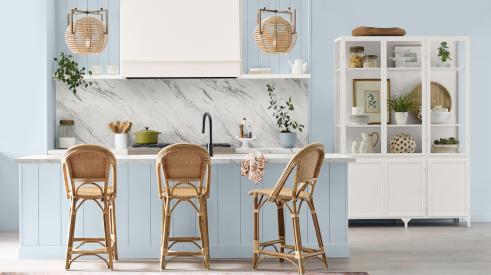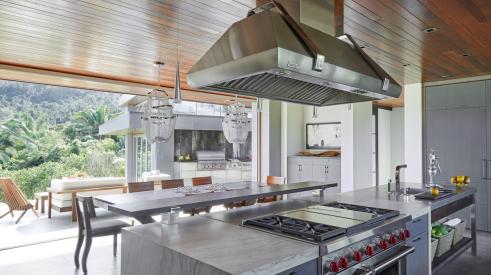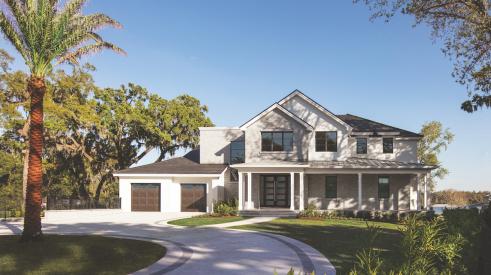TOM SWARTZ: Design-build is a term that might be overused today. How can remodelers set themselves apart with design solutions?
PAUL SULLIVAN: I agree with you, Tom. I can’t think of anybody in the business who doesn’t say they’re a design-build firm these days. It’s terribly overused. The thing that really can set you apart is to listen. Listen to your clients and listen to what they want. Figure out what their needs are and don’t just try to apply the same solution you used on the last job, or something that you just saw recently in a magazine. Listen to the clients and find out what they truly need, and then design to that specific.
DAVID ADAMS: The most important thing is to have a very talented design staff, instead of knowing how to do drafting and then all of the sudden you’re a design-build company. Also what helps us is we use a 3D software program [Chief Architect] that really helps people visualize. Like Paul said, basically just listen to what they want and really do exceptional designs, instead of just thinking inside the box, and actually be creative and have a good design staff.
SWARTZ: Who in your company takes the lead for customer design solutions?
This month featuring:
David Adams
President, Design Builders & Remodeling Inc., Ridgefield, Conn.Founded in 1986, Design Builders & Remodeling is a full-service remodeling firm with expertise in kitchens, exteriors, and excavation. The company also has a 6,000-square-foot showroom and will generate $6 million this year.
Paul Sullivan
President, The Sullivan Co., Newton, Mass.Established in 1988, The Sullivan Co. is a full-service remodeling firm offering design-build services as well as a handyman division. The company generates approximately $2.6 million in annual revenue.
ADAMS: For us, myself and one other person are the main people out there talking to clients and selling. So we take the lead; however, it’s a big team effort. On staff we have an architectural designer, a kitchen designer, an interior designer, and a selections person. We all work together with the client to get them the best solution for what they’re looking for, and we all bring different talents to the table.
SULLIVAN: I take the lead on all the design projects that come in. I meet with the client and assess what their needs are. Depending on the scope of the project, I will bring in an interior designer, an architect, or I’ll do the design in-house. It really depends on the type of project that it is and what the client needs.
SWARTZ: Where do you find the information and ideas for your design solutions?
SULLIVAN: That’s the fun part for me, whether it’s reading through the monthly trade magazines profiling beautiful projects that have solved other people’s design issues, or interior design magazines that I love. I’m a huge proponent of using the Internet to find design solutions on various sites like Houzz. Frankly, I’m someone who likes to do an awful lot of shopping, so we’re constantly in interior design stores, furniture stores, any kind of store that has to do with a house—we seem to be in them all the time. You just run into things where you say, ‘Oh that’d be perfect for the Smith project,’ or whatever it might be that you’re working on.
ADAMS: One of our greatest tools is Houzz. It’s like Pinterest except it’s made for homes. It’s been a great resource. We send our clients there and we tell them to create an account and share it with us. We can get inside their heads so they don’t have to try to describe what they like and what they don’t like. They can put little comments next to the pictures. We learn a lot just from that and seeing what people are doing. Whatever people are doing is what’s hot and what’s new. Suppliers help us a lot by showing us newer products, whether it’s plumbing supplies, tile, or whatever.
SWARTZ: Do you charge for design solutions and, if so, how does that work for your company?
ADAMS: We typically come up with a flat fee, and we list what we’re willing to do for that flat fee, which is measure the existing home; take tons of pictures; do an evaluation of the mechanicals; and talk to the building, zoning, and health departments to make sure we’re OK on all of those issues before we start designing something that can’t be built. Then we offer two major changes, and that’s all included in the lump sum. The lump sum depends on the size of the existing house and how much work they’re going to do because it takes a while to measure up the existing house. That also includes all of their estimating, so what they get for a minimal fee—compared to paying an architect—is they get a set of drawings and they get a pretty firm number other than a few allowances as to what it’s going to cost, so they can make an educated decision.
SULLIVAN: If it’s a larger-scale remodeling project with an addition or that sort of thing, and we’re using one of our architects, we charge 12 percent of the total cost of the job. If it’s a kitchen or a bathroom design that we’re doing in-house, that I’m drawing up myself, we’ll charge anywhere from $500 to $2,000 for that design work. The interior designers are paid by the hour. The architects are paid through us; the interior designers, I wish I could say I was consistent, but sometimes it’s through us and sometimes it isn’t.
SWARTZ: Does the client own the plans or do you retain them? What would prevent the client from taking those plans and getting another bid?
ADAMS: That’s a great question, and it’s one we’ve revisited constantly since I’ve been in business. My take on that is if you’re paying me to do a design, I don’t feel very comfortable saying that you can’t have the design. There’s another mindset that says they’re paying you for your time and not necessarily the design. I feel as though if they’re interested in going out and having someone else build it or just go shopping with it, I can’t stop them from doing that, and I don’t feel comfortable trying to prevent that from happening. We do the best job we can; we try to build a relationship with them.
SULLIVAN: Even if you take that hard line, it’s nearly impossible to control it. If you give out an electronic set of plans for somebody to look at, you can mark them up any way you want, but they own them the second they have them. Or if you leave a paper set behind, they can be scanned. Taking that hard stand is impossible unless you control a paper set of plans and never leave them with the client. In my opinion, it creates distrust.
ADAMS: In the beginning we were doing a lot of design work, but our percentage rate was not very high on closing those jobs to construction. So we changed our whole way of presenting it. We have them verbally buy into us before we do the design, rather than going out and selling a bunch of design contracts and basically giving people a set of cheap plans to go out bidding with. We kind of prequalify them and see if they’re sold on us and want us to build it. It’s not even really spoken about them going out and bidding—it’s presented differently. Ever since I took that attitude and that presentation—we give them preliminary numbers, so they do know approximate budget; and we work with their budget, so it’s not just a design and then they’re totally shocked—it totally changed the closing ratio. Now it’s rare if someone shops our plans—they don’t want to hassle of going out and bidding, they just want to find one good company and stay with them. So it’s easier for them too.
SWARTZ: What is the most popular design solution today, and has that changed over the years?
SULLIVAN: We’re doing more and more universal design. The thing I’ve seen change in the past number of years is that people aren’t planning on retiring off to Florida. Everybody is staying in their home and planning for the future—good, solid universal design that makes that home livable for everybody in all stages and walks of life. So we’re seeing more and more of that work. The other thing we see very often now are home office projects. It just seems like more and more people are working from home.
ADAMS: We’re in New England so it’s a very colonial, traditional living room and dining room. You walk into the center foyer and you have that big useless room on the left that’s one-third of the first floor—the living room that nobody ever goes into, the dining room that’s used about three times a year—and then they’re cramped into this little kitchen-eating area, and they spend all of their time in there. They used to ask if they could get rid of the dining room and not affect the resale value. Little by little people were doing it reluctantly, and now they’re not even thinking twice about it. Not everyone needs to have tubs and whirlpools in the master bathroom, so they’re no longer afraid of moving away from that design trend and just putting in a nice-size shower. The buzzword is transitional, and it’s us easing into the Californian contemporary design, and we’re heading that way without a doubt. People are doing anything they can to lower their maintenance costs on the exterior of the homes with Hardie siding, PVC trim, and synthetic decking. PR
This month, the Remodeler’s Exchange features two remodeling professionals who founded and operate full-service design-build firms. Professional Remodeler’s Tom Swartz spoke with David Adams and current NAHB Remodelers chairman Paul Sullivan about the process they use to guide clients through the design-build process.
Add new comment
Related Stories
This New Tech Turns Any Countertop into a Wireless Charger
FreePower for Countertop has swept awards for its innovation—and the company claims installing it is "as straightforward as cutting a sink"
Designing, Building, and Installing a Luxury Custom Wine Cube
An 11-foot wine cube enveloping a pantry is the stand out feature of this customized New York penthouse
Marvin Releases Switchable Privacy Glass Window
The privacy glass windows can be purchased from Marvin's Direct Glaze windows
Building A Small Projects Division from the Ground Up
Through hard work and careful strategy, Harth Home Services has seen big growth
Client Design Choices in the Time of Social Media and AI
Social media speeds up the trend cycles, and now artificially created images are falling into homeowners' hands
Design Trends to Watch in 2024
What’s in and out for the upcoming year? Remodeling designers share insights
Insights for Designing Outdoor Kitchens
Was the pandemic-fueled thirst for outdoor kitchen remodels and additions a fluke, or is it here to stay? Plus: The top design considerations for outdoor kitchens
Home Run Remodeling Lessons: The New American Remodel 2023
A final look at The New American Remodel 2023



